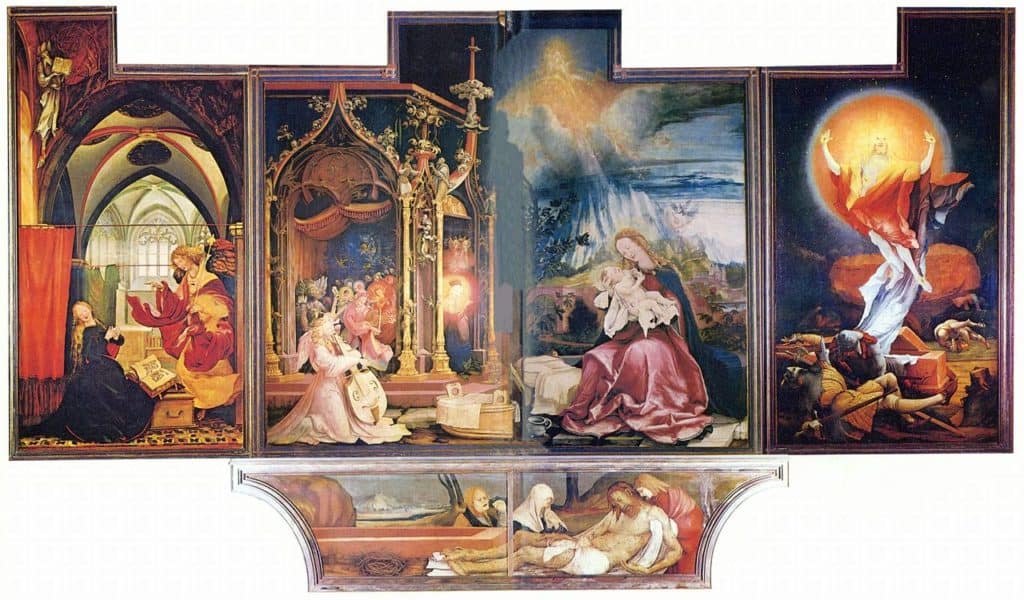The question of “Who is Jesus?” has echoed through history for over two millennia. It’s a query that transcends religious boundaries and philosophical debates. Regardless of one’s faith or beliefs, the name “Jesus” carries immense weight, and likely brings up many images, ideas, and emotions. It’s a question that has puzzled theologians, scholars, and the curious alike, and it’s a question that continues to shape the course of human history.
But why is this question so captivating? To some, Jesus is the Son of God, the Savior of humanity whose life and teachings are the cornerstone of their faith. To others, he is a historical figure, a Jewish man who walked the roads of ancient Judea, leaving behind a legacy that transcends his mortal years. And to still others, he’s a symbol of hope, compassion, and the potential for profound transformation.
Pivotal Figure in History and Today
Those who desire to understand Jesus fully must recognize his profound historical and cultural significance. He emerged onto the world stage at a pivotal moment in history, when the Roman Empire exerted its dominance. While various religious traditions and sects vied for spiritual authority, Jesus brought with him a message that rippled through time.
Jesus has also profoundly influenced human culture far beyond the walls of churches and the confines of religious texts. He has inspired artists, writers, philosophers, and activists. His teachings have shaped ethical frameworks and provided solace to those suffering. His image has graced countless works of art, from the sublime to the controversial.
But this exploration is not limited to the past. This response will examine the modern-day interpretations of Jesus and his relevance in a world marked by globalization and diversity. Jesus’ message of love, compassion, and justice can be seen today through personal testimonials and global movements. They continue to transform lives and shape the course of humanity to this day. So, whether one comes with faith, skepticism, or simply curiosity, there is something in this story for everyone. Jesus beckons all to discover the profound depths of his identity and the enduring impact he has had on the world.
Key Background information
The Gospels
Gospel means good news, and it is a fitting name for the books that tell the story of Jesus. The four Gospels of the New Testament – Matthew, Mark, Luke, and John – are essential to understanding Jesus’ life and ministry. These sacred texts were written by different authors at various times. They offer distinct perspectives for a more complete picture of who Jesus was.
The Gospel of Matthew is traditionally attributed to the apostle Matthew. It presents Jesus as the long-awaited Messiah and the fulfillment of Old Testament prophecies. Matthew’s Gospel is filled with teachings and parables, making it a valuable resource for exploring Jesus’ wisdom. The Gospel of Mark was written by John Mark, believed to have been a companion of the apostle Peter. His Gospel is known for its brevity and action-packed narrative. It portrays Jesus as a powerful and compassionate healer and emphasizes the importance of faith.
The Gospel of Luke is often described as the Gospel of compassion and inclusivity. The physician Luke’s account provides a detailed and orderly narrative of Jesus’ life, highlighting Jesus’ concern for the marginalized and downtrodden. The Gospel of John, attributed to the apostle John, stands apart with its philosophical and theological depth. It presents Jesus as the eternal Word of God, emphasizing his divinity. John’s Gospel is rich in metaphorical language. It contains profound “I Am” statements, such as “I am the good Shepherd” and “I am the way, the truth, and the life”.
Key Historical Events and Figures During Jesus’ Lifetime
In tracing the life of Jesus, one must also navigate the historical events and prominent figures who shared the stage with him. His time was marked by significant developments that would shape his mission and message.
One of the most significant figures of the era was Caesar Augustus, the Roman Emperor of the time. He was responsible for the census that brought Joseph and Mary to Bethlehem, a small town in Judea, fulfilling the prophecy of Jesus’ birthplace. Augustus’ reign marked the Pax Romana, a period of relative peace and stability across the empire. This enabled the spreading of ideas and cultures.
Closer to home, the figure of Herod the Great loomed large. Herod was a client king appointed by the Romans to rule Judea. Though he was known for his architectural achievements, his ruthless and paranoid nature led to great atrocities. This included the infamous slaughter of infants in an attempt to eliminate the perceived threat of Jesus, the prophesied king.
In the religious sphere, the high priests and leaders of the Jewish Temple in Jerusalem played a crucial role. They maintained religious order and often collaborated with the Roman authorities. This naturally led to tensions with those who sought religious and political liberation. While the Jewish people desired a religious leader to free them from Roman oppression, Roman authorities attempted to preserve control over the diverse region.
The Religious and Political Landscape of the Ancient World
Before delving into the life of Jesus, it’s imperative to understand the vibrant and tumultuous era in which he lived. The ancient region of Judea where Jesus emerged was an intersection between religious beliefs, political powers, and cultural diversity. Understanding this context is the key to comprehending the profound impact of Jesus’ life and teachings.
In the first century CE, when Jesus walked the earth, the Roman Empire reigned supreme. Its expansive territories and powerful legions exerted control over vast swathes of the known world. The Romans, with their efficient governance and engineering marvels, were masters of both politics and infrastructure. However, their rule often bore heavily on the subject peoples, leading to simmering discontent and longing for independence.
Amid this imperial dominance, Judea stood as a unique and complex region. It was a land steeped in religious fervor, with Judaism as the prevailing faith. The Jewish people awaited the promised Messiah who would deliver them from oppression. They yearned for a leader who would fulfill their hopes.
Jesus’ Life and Teachings
Jesus’ Birth, Upbringing, and Early Life
The biblical accounts of Jesus’ early years are sparse, yet what little is known provides profound insights into his character and mission. Jesus’ birth was heralded by the angel Gabriel appearing to Jesus’ mother. An angel of the Lord also appeared to Jesus’ earthly father, Joseph; however, the scriptures aren’t clear whether it was Gabriel. As Mary and Joseph traveled to Bethlehem, a unique star hung in the sky, marking the birthplace of the coming king. His birth in a humble manger is a powerful symbol of the humility with which he later approached his ministry.
Growing up, Jesus lived in Nazareth, a village in Galilee. His upbringing was undoubtedly influenced by the religious and cultural milieu of Judaism. He likely attended synagogue services, learned the scriptures, and observed Jewish customs and traditions. However, what set Jesus apart from his peers was his remarkable wisdom and understanding of the scriptures. Even as a young boy, he amazed teachers and scholars with his insights. This was a precursor to the profound teachings he would later deliver.
Jesus’ Ministry Begins
Jesus began his earthly ministry as a young man – about thirty years of age. His cousin, known as John the Baptist, had been preaching repentance for some time. John urged all his listeners to “prepare the way of the Lord” (Matthew 3:1-3). John baptized countless disciples and was widely regarded as a prophet. He was the first to point Jesus out to others and proclaim “Behold, the Lamb of God, who takes away the sin of the world!” (John 1:29). What marked the beginning of Jesus’ ministry is when he called John to baptize him. Though John objected, as he felt he should be the one being baptized by Jesus, he did. It was at that moment when the sky opened, the spirit of God came to rest on Jesus, and a voice proclaimed “This is my beloved Son, with whom I am well pleased,” (Matthew 3:17).
After this, Jesus went into the wilderness to fast and pray for forty days. There, the devil tempted him but Jesus refuted him and did not sin. And when his time in the desert had ended, he gathered his disciples. The twelve disciples were Jesus’ closest followers and friends, most of whom would later go on to be apostles and great leaders in the early Christian church. These disciples included Simon Peter, and James and John, sons of Zebedee. Women were also among the earliest followers of Jesus, including Mary Magdalene, who Jesus famously cast seven demons out of.
The Parables of Jesus
Within the gospels, the reader witnesses one of the most enduring aspects of Jesus’ identity—his teaching. Often conveyed through parables, which are stories with profound moral and spiritual lessons. Some of Jesus’ most famous parables include:
- The Parable of the Good Samaritan: This parable challenges societal prejudices and calls for compassion beyond boundaries. It teaches the essence of loving your neighbor as yourself.
- The Parable of the Prodigal Son: A tale of forgiveness and redemption. This parable is a reminder of the boundless love and grace that await those who turn back to the path of righteousness. It also speaks to those like the Pharisees who may be inclined to resent those whom God shows mercy to.
- The Parable of the Mustard Seed: Jesus uses the image of a tiny mustard seed growing into a large tree to illustrate the kingdom of heaven. It depicts a great kingdom that will be a place to rest for people from all nations of the earth.
- The Parable of the Sower: This parable explores the varying responses people have to the message of God’s kingdom. It highlights the importance of receptive hearts and steadfast faith.
These parables, among many others, offer profound insights into human nature, spirituality, and the Kingdom of God. They challenge the reader’s perspective and invite them to view the world with fresh eyes and an open heart.
The Sermon on the Mount
In addition to his parables, Jesus also preached The Sermon on the Mount. Found in the Gospel of Matthew, this sermon is a cornerstone of Jesus Christ’s teachings. Delivered on a hillside overlooking the Sea of Galilee, the sermon encapsulates his moral and ethical principles. Its impact on the development of Christian ethics and morality cannot be overstated.
The Sermon on the Mount includes the Beatitudes, a proclamation of blessings upon the meek, the peacemakers, and the merciful.; The Lord’s Prayer is also included in the Sermon, a model for Christian prayer. The Sermon on the Mount also teaches love, forgiveness, and non-violence. In this sermon, Jesus challenged the conventional wisdom of the day and called for a higher standard of righteousness. Even the religious leaders of his time were astounded by his message.
What makes the Sermon on the Mount particularly profound is its enduring relevance. Its teachings on humility, charity, and righteousness continue to guide individuals in their quest for moral integrity and spiritual fulfillment. It has influenced ethical systems, inspired social justice movements, and served as a moral compass for countless individuals throughout history.
Jesus as the Messiah: The Claim That Shaped His Identity
Through prophecies, the Jewish community of the time had inferred that God had promised a Messiah or savior. Though they did not know when they waited with bated breath for his coming. Many claimed to be the Messiah but one stood out among all others – that Jesus of Nazareth was the Messiah. This messianic claim, central to Jesus’ identity, was both a source of unwavering devotion and controversy.
The term “Messiah” derives from the Hebrew word “Mashiach,” meaning “anointed one.” In Jewish tradition, the Messiah was prophesied to be a future savior, descended from King David. He would usher in a new era of justice, peace, and the reign of God. For devout Jews of Jesus’ time, this hope was profound, reflecting their longing for deliverance from oppression.
For Jesus, the claim of messiahship was a defining aspect of his mission. It was a declaration that he was the fulfillment of these ancient prophecies. He demonstrated this through his teachings, miracles, and the transformational impact he had on those who followed him. To his disciples and a growing number of believers, Jesus was the long-awaited anointed one.
However, this claim also ignited intense controversy. Many religious leaders viewed Jesus’ assertion as blasphemous and a threat to the established order. His message of love, compassion, and humility was revolutionary but challenged the traditional religious hierarchies and practices of the time.
Jesus’ messianic mission led to frequent conflicts with the religious authorities of his day, primarily the Pharisees and the Sadducees. Jesus was not a politician or warrior, as many Jews had surmised. He claimed to be the Son of God, there to save men, not from Rome but from the wages of sin.
The Crucifixion
The religious authorities accused Jesus of several offenses including blasphemy of God, violation of Sabbath laws, and associations with sinners. These conflicts culminated in a growing tension between Jesus and the religious authorities. In the midst of this, Jesus was betrayed by Judas, one of the twelve disciples, leading to his arrest and trial.
The Setting
The climax of Jesus’ life is marked by the pivotal events of his trial, crucifixion, and resurrection. Jesus’ trial before the Jewish Sanhedrin and the Roman governor Pontius Pilate was fraught with injustice and political maneuvering. Charges of blasphemy and sedition were leveled against him. The religious leaders sought testimonies to charge him with a crime but couldn’t find anything substantial (Mark 14:55-59).
The timing of this was also crucial as it was Passover and the Sanhedrin did not want to perform the execution themselves. They therefore asked Pontius Pilate to crucify him and release a murderer named Barabas. The trial was a symbol of the collision between religious and political powers, resulting in his condemnation to death.
The Cross
The crucifixion of Jesus was a brutal and humiliating form of execution reserved for the worst criminals. For his followers, it was a moment of despair and anguish. For Jesus, it represented the culmination of his mission. He came to earth to willingly sacrifice himself for the forgiveness of sins and the redemption of humanity.
It was a painful death, not only physically, but also emotionally and spiritually. He was betrayed and abandoned by his closest friends. The masses insulted and jeered Him. He cried out “My God, my God, why have you forsaken me?” (Matthew 27:46) as he saw scripture being fulfilled. The Bible says he became sin (2 Corinthians 5:21) and despised the cross. But he did this all for the joy set before him (Hebrews 12:2).
The Resurrection
The resurrection of Jesus, as recounted in the Gospels, is the cornerstone of the Christian faith. It is a testament to the victory of life over death and hope over despair. The belief in Jesus’ resurrection transforms his followers, and it continues to be a source of inspiration and power.
These events, steeped in history and faith, have been subjects of intense study and contemplation. It is what sets Christianity apart as followers believe that Jesus defeated death when he rose from the grave. Because of this, all who believe in him and his resurrecting power can also be spiritually raised with him.
Whether one views these events through a theological or historical lens, they undeniably played a pivotal role in shaping the identity and significance of Jesus. In the wake of these transformative events, the world would never be the same again. Because of this the message of Jesus reverberated across the world and for generations to come.
Theological Perspectives
Christianity: Jesus as the Son of God and the Foundation of the Faith
For over two billion Christians worldwide, Jesus of Nazareth is more than a historical figure; he is the central figure of their belief. He is believed to be the Son of God and the cornerstone of the Christian faith. The theological perspectives on Jesus within Christianity are diverse. However, they all revolve around his divinity and his role in the salvation of humanity. Christian theology believes in three foundational statements about Christ:
-
Son of God
Christians believe the assertion that Jesus is the Son of God, the Second Person of the Holy Trinity. This doctrine, known as the “Incarnation,” posits that Jesus is both fully divine and fully human. It is a profound mystery that has been the subject of theological exploration for centuries. This aspect of Jesus’ identity makes it possible for followers of Christ to have a personal relationship with God.
-
Redemption through Jesus
Central to Christian theology is the concept of redemption through Jesus’ sacrificial death on the cross. Christians believe that Jesus’ crucifixion atoned for the sins of humanity, offering salvation to those who accept him as their Lord and Savior. This is possible because Jesus came and lived a sinless life and paid the debt owed by all men with his blood. Christ Jesus is the only way to eternal life. If one believes in the power of his death and resurrection and seeks to live their life for him, they will be called children of God.
-
Ethical Teachings
Jesus’ teachings, particularly the Sermon on the Mount, have deeply influenced Christian ethics. His call for love, forgiveness, and compassion has shaped moral frameworks for centuries. Christians often turn to his teachings as a guide for living virtuous and righteous lives. This goes further than just trying to follow Jesus’ teachings for a believer. It turns into a desire to become more like Jesus in character and nature so that it is not just like following rules. Christians seek to love the sort of things Jesus loves with the help of the Holy Spirit working in them.
The Significance of Jesus in Other Religious Traditions
While Christianity is the primary faith that reveres Jesus as divine, its significance extends beyond its boundaries. Understanding these perspectives adds depth to the multifaceted identity of Jesus:
In Islam, Jesus, known as ‘Isa, is considered one of the great prophets. He is highly respected and is believed to have been born of the Virgin Mary. However, Islamic theology differs from Christianity in rejecting the concept of Jesus’ divinity and crucifixion. Instead, Muslims believe that Jesus will return in the future as a sign of the Day of Judgment.
Jewish believers also see Jesus as a historical figure but reject the claim that he was the Messiah. Many revere him as a prophet but believe Christians are wrong in their assertion that he is the Son of God.
Historical Evidence and Academic Perspectives
Examination of Historical Sources Beyond the Gospels
When embarking on the journey to understand the historical Jesus, it can help to extend the gaze beyond the pages of the Gospels. While these sacred texts are a treasure trove of information about Jesus, historians employ a critical lens and explore a variety of non-biblical sources to corroborate and enrich one’s understanding of the Lord Jesus Christ.
- Non-Christian Historical Accounts: The quest for the historical Jesus often begins with references in ancient non-Christian historical writings. Two notable mentions come from the Roman historian Tacitus and the Jewish historian Josephus. In his accounts, Tacitus briefly mentions “Christus” and the persecution of Christians under Nero. Josephus, in his Antiquities of the Jews, includes references to Jesus and early Christian communities. However, some passages have been subject to debate and possible interpolation.
- Archaeological Discoveries: Archaeological excavations in the Holy Land have unearthed a wealth of artifacts and inscriptions. These findings provide crucial context for understanding the social, political, and religious landscape of Jesus’ time. They also lend credence to the historical backdrop against which his life unfolded.
- Ancient Jewish Texts: Rabbinic literature and other Jewish writings from the Second Temple period offer insights into the beliefs, practices, and debates within Judaism during Jesus’ lifetime. These texts help us comprehend the religious milieu in which Jesus operated and the expectations of his era.
Controversies and Debates Among Scholars About Jesus’ Existence and Identity
The study of Jesus’ historical existence and identity is far from a monolithic endeavor. It encompasses a wide spectrum of perspectives and scholarly debates. Here are some of the key controversies that arise within this field:
-
The Quest for the Historical Jesus
Historians embark on an ongoing quest for the historical Jesus. Many of these historians aim to separate the historical figure from later theological interpretations. This quest often leads to diverse and sometimes conflicting theories about Jesus’ life, teachings, and the context of his ministry.
-
The Jesus Myth Theory
In a small but vocal corner of scholarship, the “Jesus myth theory” has emerged. This theory posits that Jesus never existed as a historical figure and was instead a mythical or allegorical creation. It challenges the traditional belief in Jesus as a historical person. This theory remains a fringe view and is widely rejected by mainstream scholarship.
-
Jesus was only a Great Moral Teacher
This argument is held by many who agree with some of Jesus’ teachings but do not believe he was the Son of God. This was most popularly refuted by apologist C.S. Lewis in his book Mere Christianity. His argument asserts that one should not take Jesus to just be a good moral teacher because a good man would not claim to be God. He must either be a lunatic or a very bad man. Lewis then states that the character Jesus shows in the Bible does not lend to either of these conclusions. Therefore, the only conclusion he sees is that he is who he says he is.
-
Variations in Gospel Portrayals
Scholars frequently note discrepancies and variations in the Gospel accounts of Jesus’ life. This has sparked debates about the reliability of specific details and the theological motivations of the Gospel authors.
By delving into the historical evidence and academic perspectives surrounding Jesus, it is possible to gain a deeper appreciation for the different views on Jesus’ identity. It should encourage individuals to engage in critical thinking and respect the diversity of scholarly views. This highlights the significance of Jesus in an ever-evolving understanding of history and faith.
Cultural and Literary Influence
Jesus’ Impact on Art, Literature, and Popular Culture
The influence of Jesus Christ transcends the boundaries of religion, permeating the realms of art, literature, and popular culture. From the earliest days of Christianity to the present, Jesus has served as an endless source of inspiration for creative minds. He has become a central figure in the collective human imagination.
The rich tapestry of art history is interwoven with depictions of Jesus. From the stunning mosaics of ancient churches to the masterpieces of the Renaissance, artists have sought to capture the essence of Jesus’ divinity and humanity. Leonardo da Vinci’s iconic “The Last Supper” and Michelangelo’s sublime “La Pieta” are testaments to the allure of Jesus as a subject in art.
Jesus’ life and teachings have been a wellspring of inspiration for authors across centuries and cultures. Literary giants like Fyodor Dostoevsky, in “The Brothers Karamazov,” and Nikos Kazantzakis, in “The Last Temptation of Christ,” have grappled with the profound questions raised by Jesus’ story. Even in contemporary literature, authors continue to explore the enduring relevance of his message.
In the realm of popular culture, Jesus’ influence is ubiquitous. His parables and teachings have found their way into countless films, TV series, and music. Iconic films like “The Passion of the Christ” and “Ben-Hur” have brought his story to life. Likewise, musicians across genres have drawn from his teachings to craft songs that resonate with audiences worldwide.
Historical Figures Inspired by Jesus’ Teachings and Legacy
Beyond the realms of art and literature, the impact of Jesus is palpable in the lives of historical figures. Countless have drawn inspiration from his teachings and legacy. Here are a few notable individuals:
- Mahatma Gandhi: The leader of the Indian independence movement was deeply influenced by Jesus’ teachings on nonviolence and love for one’s enemies. He famously said, “I like your Christ; I do not like your Christians. Your Christians are so unlike your Christ.”
- Martin Luther King Jr.: Dr. King, the iconic leader of the American civil rights movement, drew from the principles of social justice, equality, and nonviolent resistance exemplified by Jesus. His eloquent speeches and peaceful protests were a testament to the power of Jesus’ message.
- Mother Teresa: She was renowned for her selfless work among the poorest of the poor in Calcutta. Mother Teresa embodied Jesus’ call to serve the marginalized and oppressed. She often spoke of seeing Jesus in the faces of those she cared for.
- Leo Tolstoy: The Russian author and philosopher underwent a profound spiritual transformation influenced by his deep reading of the Gospels. His interpretation of Jesus’ teachings led him to advocate for radical pacifism, simplicity, and the rejection of violence.
Whether in the brushstrokes of a painter, the pages of a novel, or the lyrics of a song, Jesus’s influence continues to flourish. His presence is a source of inspiration, hope, and reflection for people across the globe. It is a testament to the enduring power of his story and the profound impact of his teachings.
Modern-Day Interpretations and Relevance
The teachings of Jesus Christ, delivered over two thousand years ago, continue to resonate in the hearts and minds of people around the world. In the modern era, his words serve as a moral compass, guiding individuals and societies toward ethical choices and actions.
Perhaps one of the most universally applicable teachings of Jesus is the command to “love thy neighbor as thyself.” This principle underpins countless humanitarian efforts and social justice movements, inspiring people to care for one another regardless of differences.
Jesus’ emphasis on forgiveness, even in the face of wrongdoing, has profound implications for contemporary society. It challenges the cycle of revenge and retaliation, promoting reconciliation and healing in personal and societal conflicts.
Jesus’ compassion for the marginalized and downtrodden continues to drive efforts to address social inequalities, providing support for vulnerable populations. His example motivates individuals and organizations to work towards a more just and equitable world.
In times of adversity and struggle, people often turn to Jesus as a symbol of hope, endurance, and inspiration. His life, marked by compassion, resilience, and unwavering faith, provides solace to those facing challenges. His story reaches individuals enduring their trials. It offers a reminder that even in the darkest of times, there is the potential for transformation and redemption. The story of Jesus’ suffering and crucifixion depicts a love that challenges individuals in their lives. During natural disasters, pandemics, and humanitarian crises, individuals and organizations inspired by Jesus’ teachings often lead relief efforts. His emphasis on caring for the vulnerable compels people to respond with compassion and generosity.
Jesus’ Relevance in Today’s Globalized and Diverse World
In an increasingly interconnected and diverse world, the message of Jesus transcends borders and cultures. The globalization of information and communication has made Jesus’ message accessible to a global audience. His story and teachings continue to inspire individuals and communities worldwide. His teachings bring together people from various cultural backgrounds, fostering a sense of shared humanity.
Jesus serves as a point of connection and dialogue among different religious traditions. Interfaith discussions often revolve around his teachings on love, compassion, and justice, fostering greater understanding and cooperation.
In societies with diverse belief systems, Jesus’ ethical principles offer a common ground for fostering ethical behavior and values. His teachings on love, forgiveness, and charity provide a framework for ethical decision-making that can bridge religious and cultural divides.
Personal and Global Perspectives
The impact of Jesus Christ extends far beyond theological debates and historical analysis; it touches the lives of countless individuals. Many individuals have experienced personal redemption and transformation through their faith in Jesus. Their stories often center on overcoming addiction, finding purpose in life, and experiencing a profound sense of forgiveness and grace. Beyond personal struggles, some people share how encountering Jesus led to profound shifts in their worldview. They found themselves embracing values of love, compassion, and service to others as a direct result of their faith.
The teachings of Jesus have inspired the creation of numerous charitable organizations. Compassion International, Salvation Army, World Vision, and Habitat for Humanity are only some examples of this. Countless other social justice movements dedicated to making a positive impact on the world have sprouted from the values Jesus shared with the world.
In summary, personal testimonials of transformation, the work of charitable organizations, and the impact on social justice and humanitarian efforts collectively illustrate the profound influence of Jesus on individuals and the global community. His teachings continue to inspire acts of compassion, service, and social change. They resonate with people from all walks of life, highlighting the continued relevance of his message to this day.
Conclusion
Jesus Christ’s influence extends into the past, present, and future. The exploration of the question “Who is Jesus?” should not be a mere historical exercise. Jesus’ teachings on love, compassion, forgiveness, and justice remain essential in a world marked by diversity, complexity, and challenges. But more than that, he claimed to be the Son of the Living God. He came to earth in human form to pay for the sins of the world. As the apostle Paul said, “He is the Image of the invisible God,” (Colossians 1:15).
Surely the name of Jesus is powerful. He is very possibly the most influential person in all history. His influence can uniquely be felt across the entire world. Jesus claims to freely offer everlasting life to all who seek him. Whether one believes his claims or not, one of the most important questions everyone should ask themselves is “Who is Jesus to me?”’
What do you think? Please share your thoughts below.
Too often, people answer faith questions with dogmatic certitude and neglect the historic diversity and complexity of Christian ideas. The Questions Project is a resource that responds to questions about faith, history, and scripture in a way that honors the historical diversity and complexity of Christian thought. But, this is a work in progress and we want your help. Please provide feedback. We are particularly interested in knowing what we may have missed and how we can improve our responses. Please keep all comments kind or risk deletion.







